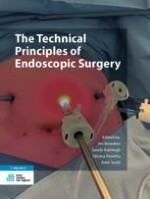Abstract
Minimally invasive surgery has progressed significantly over the past few decades. The drive to reduce surgical trauma to improve surgical outcomes has ultimately resulted in single incision surgery, which was introduced around the beginning of the 21st century. Robot-assisted single incision surgery was initially adapted in cholecystectomy and has gradually expanded to other surgical procedures, such as colectomy, hysterectomy, and esophagectomy. The da Vinci surgical system is the most commonly used interface worldwide, however, robots developed by other manufacturers are expected in the coming years. The scientific evidence regarding the added value of robot-assisted single incision surgery is mainly focused on cholecystectomy, and comparative studies remain scarce. A clear case for single incision surgery can be found in the field of natural orifice surgery, such as transoral, transvaginal, and transanal surgery. The initiation of single incision robot-assisted surgery is challenging and requires adequate surgical experience, careful patient selection and consent, and extensive guidance from experienced colleagues.
